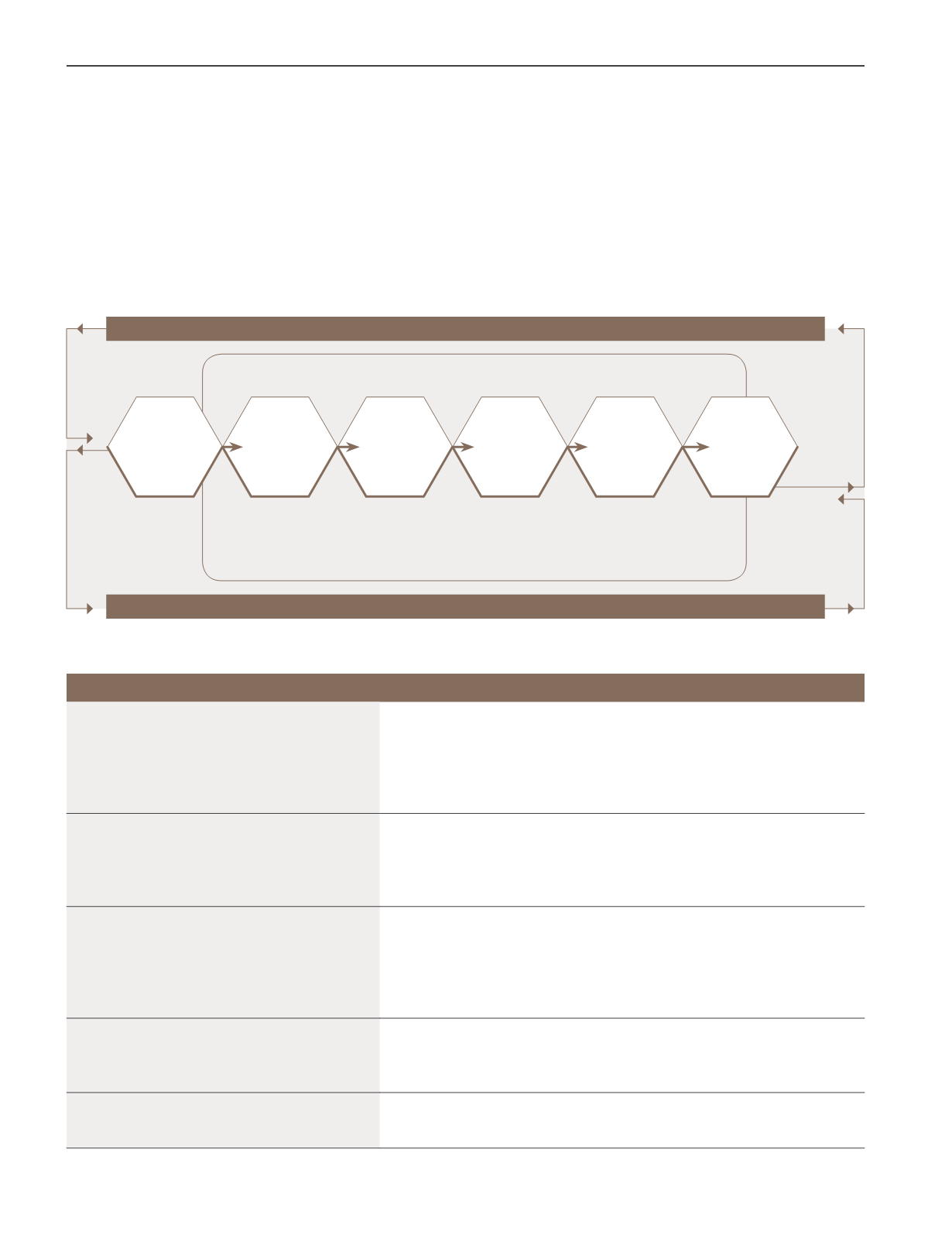

Fima CORPORATION Berhad
(197401004110) (21185-P) •
Annual Report 2020
92
The responsibility for day-to-day risk management resides with the Management of each business unit where they are the risk owners
and are accountable for managing the risks identified and assessed. In managing the risks of the Group, the GIA will collaborate with the
Management in reviewing and ensuring that there is on-going monitoring of risks, the adequacy and effectiveness of its related controls,
and that action plans are developed and implemented to manage the risks within the acceptable level by the Group.
In this regard, the risk management process has been established to provide the foundations and arrangements for risk owners in
identifying, implementing, monitoring, reviewing, and continually improving risk management throughout the company. The process
ensures that information about risk is adequately recorded and reported for reference. The Group’s risk assessment process is adopted
from the MS ISO 31000:2010 guidelines as depicted below:
MONITORING & REVIEW
Consultation & communication
• Identify exiting controls & actions to mitigate risks
• Determine inherent & residual risk ratings
• Determine date to implement risk mitigation actions
RISK ASSESSMENT
Define
processes,
activities &
objectives
Identify
risk
Analyse
risk
Evaluate
risk
Treat
risk
Risks
Profile &
Parameter
The summary of key risk categories and mitigation measures are as follows:
Key risk category
Our approach
Business and operational:
Local and global competition, economic slowdown
factors and invasion/demonstration by the local
community due to conflict or cultural belief
adversely impact the business operations.
• Monitor market/ economic conditions.
• Strategic business plan based on market conditions.
• Costs saving initiatives across the business units.
• Key marketing strategy for each division.
• Engagement with the local community.
Sustainability:
Higher expectation and demand by the
stakeholders for company to produce products in a
sustainable and responsible manner.
• Group Sustainability Committee is tasked to oversee the Group’s
sustainability initiatives and performance.
• Maintain supply chain transparency and adherence to international
standards.
Environment:
Local and global weather patterns, natural
disasters, diseases or crop pests and stringent
environmental and conservation regulations.
• Flood mitigation measures at flood prone areas.
• Establishing a safe wildlife corridor for animals to ensure they do not wander
off into communal/estate areas.
• Water and waste management.
• Adoption of good agricultural practices.
Financial:
Volatile exchange rates for import and export and
fluctuation in prices.
• Continuously manage exposures and long-term asset and liability outlook.
Compliance:
Internal and external regulatory requirements.
• Compliance of business processes with the relevant laws/regulations.
• Review the Group’s policies and procedures from time to time.










